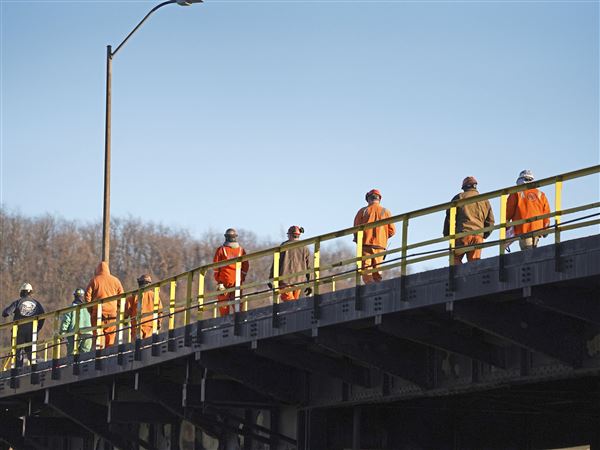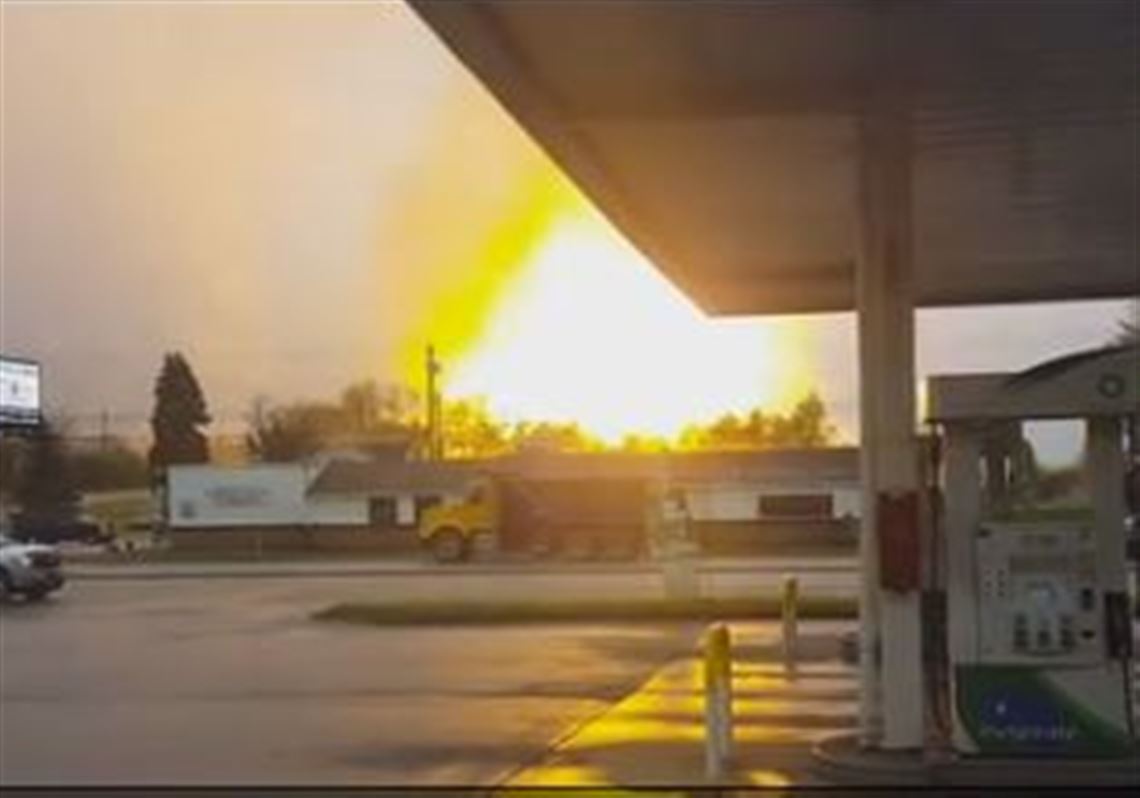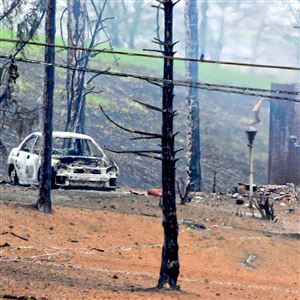Federal regulators investigating the April 29 natural gas pipeline explosion in Westmoreland County have found corrosion on another pipeline which runs parallel to the one that burst.
A review of assessments done on a 24-inch pipeline that shares a right of way with the 30-inch exploded pipe, “has shown a pattern of external corrosion with characteristics similar to the condition that caused the failure,” the Pipeline & Hazardous Materials Safety Administration stated in an updated order on Tuesday.
The exploded pipeline burst at a weld that was coated with tape, a method no longer common today. The investigation so far has found that the tape coating disbonded from the pipe and that corrosion was found on the weld that ruptured and on another nearby.
Disbondment is an increasing worry for corrosion specialists because the detached coating material can act as a barrier to a pipeline’s cathodic protection system, a secondary method of mitigating corrosion by pumping electric current to the metal pipe.
Spectra Energy, the Texas-based company that owns the Texas Eastern pipeline system, said it would dig up hundreds of sites along a 263-mile stretch running across Pennsylvania to examine the same type of tape coating that was found at the site of the explosion and generally assess the integrity of the four pipelines on that system.
Federal regulators on Tuesday also added new requirements for Spectra to further assess the health of the 24-inch pipeline where corrosion has been found. That pipeline wasn’t operating at the time of the explosion and remains out of service today.
In addition to excavations, the federal pipeline agency on Tuesday also ordered Spectra to perform two hydrostatic tests on 27-mile segments of the exploded line and the other pipeline where corrosion was found. A hydrostatic test is usually first performed before a pipeline is put into service by filling a portion of the pipe with water, pressurizing it and holding that pressure for a period of time to look for possible defects or leaks.
The pressure applied is 125 percent of the maximum pressure at which the pipeline would be allowed to transport gas once in service.
The agency also mandated Spectra to produce a root cause analysis in the next three months and evaluate its emergency response procedures following the accident.
The April blast left one man, James Baker, with severe burns and two amputations after he struggled to escape his home, which was destroyed by the fire. The flames and heat charred another house, melted a road, and destroyed several cars.
Of the four pipeline in the right of way between the Delmont Compressor station 2 miles from the accident site and the Armaugh Compressor station 25 miles east, one went back into service in mid-May.
Anya Litvak: alitvak@post-gazette.com or 412-263-1455.
Correction: This story was corrected to reflect that only one pipeline in the impacted area of the explosion has returned to service in mid-May.
First Published: July 20, 2016, 3:59 p.m.
















